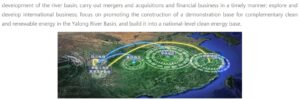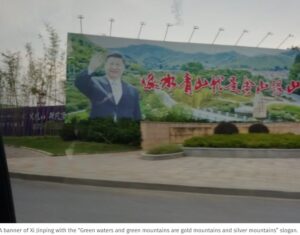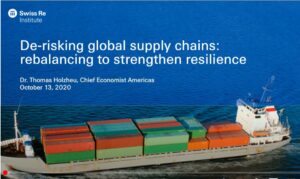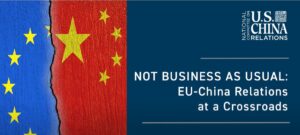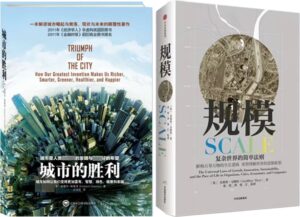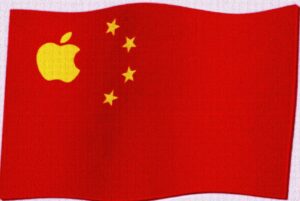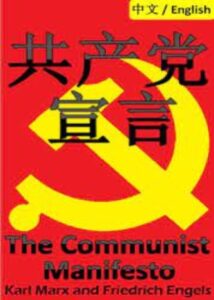HOW TIBET HELPS CHINA WIN THE NEXT INDUSTRIAL REVOLUTION
Many fates have loomed for Tibet in the seven decades this vast plateau has been forced into Chinese modernity.
Initially, in the proclamations of revolutionary communism, Tibet was to become a new heaven on earth, to be accomplished by first destroying all that is old.
In this century, Tibet was given a makeover as “China’s Number One Water Tower”, requiring the headwaters of the Yellow, Yangtze and Mekong rivers to be depopulated of customary pastoralist stewards, in the name of water security. China’s new found concern for nature protection came right after China ceased stripping bare the forests of the upper Yangtze only in 1998, after disastrous floods downriver.
In today’s China, ambition grows. Those rivers are now reimagined, as the source of round the clock renewable energy. China will achieve its goal of global leadership by switching to reliable renewables, all made in China, their reliability guaranteed by making the rivers function as enormous batteries, to be flicked on and off in sync with urban demand thousands of kilometres away.
The key to emissions reduction is decarbonisation, which requires massive investment in installing solar and wind power in vacant and vacated landscapes, such as Tibet. But solar and wind vary, unlike coal-fired power stations which export electricity to consumers as and when needed. China calls this a stuck neck problem.
Tibet is shaping as the solution. Those rushing mountain rivers cutting ever deeper valleys, in sync with tectonic uplift, are all kinetic energy just awaiting the human hand pouring concrete, gaining mastery of the plateau’s multiple gifts: altitude sufficient to pull monsoons in from the oceans, gravity to propel waters to China, all awaiting human intelligence to make and export electricity.
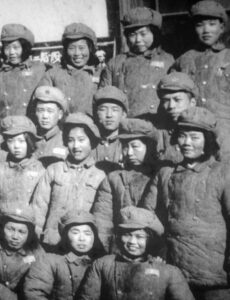
XINJIANG IN THE RISE AND RISE OF CHINA
There are moments when causes and conditions come together, opportunity arises, and alert minds seize the day. Such a moment arose decades ago as China’s party-state central planners gazed far west towards Xinjiang. New oil fields were adding to the oil wells the CCP inherited. Gas was also found, and coal. The climate and terrain of Xinjiang enabled melons, cotton and tomatoes to be grown on industrial scale, and these labour-intensive industries could soak up surplus labour in lowland China, among demobilised soldiers and landless peasants. It all added up. All that would be needed would be upgraded infrastructure linkage railways and highways, a disciplined workforce, lots of state funded capital expenditure, and a mass influx of immigrants. All of which sidelined the Uighurs.
The world knows what happened. The auspicious arising of causes and conditions dissolved, even as China pressed on with building aluminium smelters in Xinjiang, power grids to export electricity to China, high speed rail construction, a militarized construction corps, while the Uighurs were increasingly marginal in their own land. Everything changes.
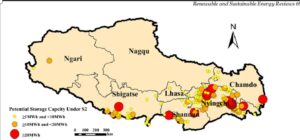
Now China extends its gaze to the Tibetan Plateau, and for the first time sees opportunity akin to Xinjiang in the 1970s. Tibattery. The key to abolishing the uncertainties of new energy lies in Tibet’s endowments of altitude and water. Just add pumped hydro dams and power grids designed to make Tibet China’s electricity export powerhouse. Gravity and seasonal monsoon advance/withdrawal will do the rest. Tibet is transformed from cost centre to profit centre. Goldman Sachs cheerfully predicts China’s pumped hydro will more than double, as soon as the end of this decade.
Compared to Xinjiang, it has taken China a long time to discover how to make a colony on the high altitude frontier of a land empire profitable. Central Tibet, U-Tsang in Tibetan, Xizang/Tibet Autonomous Region in Chinese, has been especially problematic, so lacking in industry, urbanisation, linkages and endogenous growth as to be downright embarrassing, routinely omitted from cross-provincial statistical comparisons, such a laggard, best quietly forgotten when making comparisons.
HYDRAULIC CIVILISATIONS: UP AND DOWN
Now, at last, Tibet is fulfilling its’ destiny as “China’s Number One Water Tower.” The numerous big hydro dams on all Tibetan rivers, some in Tibet, many more just below, already fulfil that destiny, including longhaul transmission of electricity to distant Chinese provinces from hydro dams in cascade on the Ma Chu/Huang He/Yellow River in Amdo, northern Tibet. Then there’s the large scale trout aquaculture industry in those dammed up waters in Amdo. Now China has built one of the world’s biggest high tech carbon fibre factories In Amdo, powered by the abundance of electricity.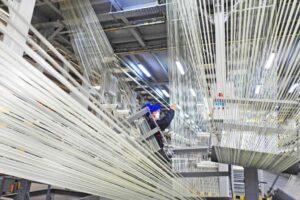
Why make carbon fibre in Amdo? Why mine cryptocurrency just below Tibet in Sichuan? Why smelt aluminium just below Tibet in Yunnan? What they all have in common is cheap and plentiful electricity extracted from Tibetan rivers. To be more precise, abundant electricity is available max six months a year, during the summer monsoons and for a while after.

TIBET RESCUES CHINA’S STUCK NECK
Pumped hydro isn’t going to fix that. Pumped hydro alternates between pumping out electricity when it’s needed far away, and pumping water back uphill when electricity demand is low. The magical thinking that declares pumped hydro is the key to a whole new post-fossil-fuel society, depends on pumped hydro going up and down by the hour, by the minute. A river that paces itself according to peak hours in a distant city. An urbanised river, as the city surrounds the countryside, reversing Mao’s guerilla war dictum.
There is even a possibility that the rocks of upslope Tibet could harvested for the heat they absorb every spring, and hold for months, attracting the monsoon. Bare rock Tibet as a massive heat pump.
Four, five decades ago Xinjiang was central to the miracle of China’s rise and rise, then it unravelled in ways that could have been foreseen. There is only so much alien rule that disempowered local communities can take. China’s discovery that Tibet is the missing link enabling it to globally dominate the Fourth Industrial Revolution will inevitably fail, as causes and conditions tear apart, unintended consequences rear up, and China’s security state fears up.
But right now Tibet features in a tech vision of utopia, as the ultimate battery, replenished by monsoons, rushed into the waiting turbines by gravity. Free. Rivers are all public goods of the global commons provided for free by mother nature, just there for the taking. And it’s all “green, clean and renewable.”
If pumped hydro accelerates river rises and falls, from an annual cycle to cycles measured in hours and minutes, so be it. All it takes is dams, lots of dams, in pairs, pumping up and powering down.
ELUDING AMERICAN CONTAINMENT VIA TIBET
More dams, more solar and wind, more rivers-cum-batteries all add to China’s quest to build on becoming the world’s factory, on the way to owning the Fourth Industrial revolution. But China now faces strong constraints imposed by the US, and Tibet again may be how China escapes American pressure. China’s mission to conquer must not be thwarted by American interference, embargoes and sanctions. China, on the cusp of nailing the planet’s “clean, green” tech, is not going to let the US thwart its’ ascendency.
“China’s premier Li Qiang has criticised a western push to limit trade and business ties with the country in a speech that described de-risking as a “false proposition”. “Governments should not over-reach themselves, still less stretch the concept of risk or turn it into an ideological tool,” Li said in the keynote address at a World Economic Forum event in which he criticised “the politicisation of economic issues”. Li warned that “some in the west” were “hyping up . . . reducing dependencies and de-risking” and said such efforts were “false propositions”, arguing that businesses were in the best position to assess risk.”
In response to the formation of a Western bloc, China is responding in kind, setting up its own domestic supply chain, which means a sharp turn towards intensified exploration and exploitation of Tibet, including inside protected areas, with previously sacrosanct “redlines.” China calls de-risking initiated by the US as a “false proposition”, but is de-risking its global raw materials supply lines by intensifying exploitation of Tibet.
It took China decades to achieve dominance in the processing and supply of critical minerals, and many technologies that make use of critical minerals. China will not readily surrender its dominance, and is actively intensifying mineral exploration and extraction from Tibet, especially in Kham, with specific provisions for getting geologists and miners into the redlined protected areas.
In May 2023 the central planners of the National Development & Reform Commission praised Sichuan province for its plan to intensify mining by 2025: “Sichuan will focus on the national shortage, Sichuan advantage of lithium, vanadium, titanium, rare earth and 28 other important mineral species, vigorously implement basic geological survey, mineral resources exploration, mineral resources conservation and comprehensive utilization, geological mining science and technology innovation projects.” By area, 42 per cent of Sichuan is Tibet, the two Tibetan prefectures of Kham Kandze and Amdo Ngawa (Aba in Chinese).
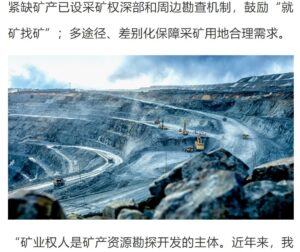
In June 2023 a high level gathering in Chengdu announced the new strategy is under way, “focusing on national resource security needs, strategic mineral resource development, oriented to solve key technical problems, integrating resources, multidisciplinary cross research and development, promoting technology engineering.” This wording is uncannily similar to the US-led critical minerals secure supply plan. The new national policy is called the New Round of Strategic Action for Mineral Search and Breakthrough, 新一轮找矿突破战 略行动. with China’s Ministry of Natural Resources setting up a Strategic Mineral Comprehensive Utilization Engineering Technology Innovation Center, in charge of implementation.
This intensifying securitisation of Tibet is on the orders of Xi Jinping. “It is a practical action to implement the spirit of General Secretary Xi Jinping’s important instructions on ensuring the security of national energy resources. It is a key deployment to maintain the stability of the industrial chain supply chain, ensure the security of national energy resources, and prevent the risk of recession in the international economic cycle. It is a support for the new era and new journey. The country’s major strategic needs and practical measures to build a new development pattern.” 是落实习近平总书记关于保障国家能源资源安全重要指示批示精神的实际行动,是维护产业链供应链稳定、保障国家能源资源安全、防范国际经济周期衰退风险的关键部署,是新时代新征程上支撑国家重大战略需求、构建新发展格局的务实举措。
The decisive moment was in late 2022, just when China threw off its pandemic restrictions: “The Central Economic Work Conference held in December 2022 emphasized strengthening domestic exploration and development of important energy and mineral resources and increasing reserves and production, accelerating the planning and construction of a new energy system, and enhancing the national strategic material reserve guarantee capacity. This has pointed the way forward and provided fundamental guidelines for the comprehensive implementation of the new round of strategic actions to find and breakthrough in mining.”
At exactly the moment coal mining is meant to wind down, to save the planet from overheating, the mining of everything else in China is winding higher.

The more the West tries to reshore critical minerals supply, the more China does the same. This is becoming a self-fuelling cycle. In China this means patriotic campaign mode, minerals security as a national mission, lots of military metaphors in the new slogans that make geologists (as in the 1950s) the heroic shock troops of socialist materialism.

URBANISATION IS TIBET’S DESTINATION
On its’ march to Industry 4.0 dominance, China calls the variability of wind and solar power one of its stuck neck 卡脖子problems, one of several pinchpoints for which a tech solution must be found. A long list of China’s triumphs in unsticking the stuck necks caused by American refusal to share tech is a favourite of media. CCP Politburo in 2021 convened a special meeting to speed up unsticking those stuck necks. Tibet is unsticking a lot of China’s stuck necks.
When Tibet’s rivers are plugged into instantly switching from electricity generation to dammed energy storage, back and forth, Tibet is plugged into China’s utopian dream of urban efficiency. One of China’s most senior central planners, Xu Lin, puts it this way: “Big cities are attractive and competitive for several reasons. They are more culturally open and inclusive, which makes them appealing to talent. Additionally, they provide better conditions for realizing economies of scale, enabling professional specialization and fostering successful entrepreneurship. Large cities often exhibit higher efficiency and stronger competitiveness. Furthermore, through the radiating influence of big cities within urban agglomerations and metropolitan areas, it becomes easier to establish a pattern of coordinated development with a rational division of labor between large, medium, and small cities, as well as small towns.
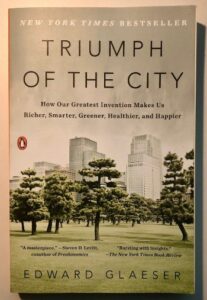
“Consequently, smart city construction has been prioritized nationwide. During my work at the Urban Center of the National Development and Reform Commission, I was involved in assisting a city in planning and implementing the construction of a smart city. Additionally, a smart city alliance was established, fostering collaboration among relevant enterprises and institutions. Future digital construction will manifest as a pattern of digital nations, digital cities, digital communities, digital enterprises, and digital households. This transformation will integrate technologies such as big data, cloud computing, and artificial intelligence. Achieving this requires addressing various issues, including hardware and software technology support, chip semiconductor research and development, and manufacturing, as well as the accumulation and management of data resources. To address these challenges, the National Data Bureau was established to facilitate the standardized and effective use of data as a production factor, ultimately realizing the industrialization of digital applications. The recent popularity of the artificial intelligence OpenAI learning model, ChatGPT, is also a testament to the computing models based on big data. In the future, artificial intelligence will permeate all aspects of the economy and society, potentially revolutionizing production, service, and research and development models. The effective standardization, management, and potential replacement of human resources in this context present challenges to existing cognitive and management systems.”
Xu Lin was a senior planner for 29 years, he speaks as eloquently as any American tech bro of a new heaven on earth, exemplified by the Beijing/Tianjin/Hebei megapolis, the Chengdu/Chongqing megapolis, the Lanzhou/Xining megapolis, all of which are under construction by order from above. All are incarnations of the centrally planned dream, designed to be even better that the Hong Kong/Guangdong/Macao/Greater Bay megapolis that already exists. It is no accident that three of these four megalopolitan super giants are powered directly by direct current electricity exported from Tibet; only Beijing is too far (so far).
WINNING THE NEXT INDUSTRIAL REVOLUTION FOR CHINA: MOTHER OF ALL BATTERIES
The Fourth Industrial Revolution, or Industry 4.0, supersedes the Third, which was the era of automation and computers abolishing the old certainties. Now only 40 years on, we have a Fourth Revolution, heralding the arrival of the metaverse (which no-one can define), the internet of things, augmented reality, cloud computing and cyber security; all of which rely crucially on instantaneity. Always on. No latency. Everything connected to everything. All of it utterly dependent on electricity, instantly available, on demand, thanks to Tibet.
The first industrial revolution -coal and steam power- took close to a century to be overtaken by the second -oil and internal combustion engines. The third industrial revolution, of automation and computing, took a further 60 years. These revolutions are picking up pace, as one would expect of any project of human vanity, ever accelerating, always demanding more, quickly discarding anything older as yesterday’s “legacy.”
Britain dominated the first industrial revolution, the US dominated the second and third. China is determined to be the dominant, definitive hegemon of the fourth.
YOU SAY YOU WANT A REVOLUTION
As industrial revolutions accelerate and tech utopias beckon, the very last thing the Chinese Communist Party wants is another political revolution. Ethnic policy tsar Pan Yue’s grand project of shifting the CCP from a revolutionary party to a permanently ruling party means all of China must recognise this institutionalisation of the CCP as normal. The faster the tech changes, the more the CCP arduously struggles to strangle civil society and be the sole voice of all citizens. Nothing horrifies CCP leaders more than those “colour revolutions” when disempowered masses discover their voice and overthrow dictators.
Central planner Xu Lin exemplifies this institutionalisation of the party-state elite. On retirement from central planning he effortlessly transitioned to chairing the China-US Green Fund, whose top investment priority is solar and wind power. Xu Lin speaks passionately about China’s slowing growth, unbalanced economy and those unfavourable “changes not seen in a century”. His solution to everything is innovation and hard work.
In the real world, whether in US or China, innovation usually means letting big tech companies build their Industry 4.0, which they will monopolise, concentrating China’s inequality even more. Wealth accumulation will only intensify as corporate innovation reduces humans to data points, whose desires are monetised by the omnipresent internet of things.
CHINA STAGNATES
After three decades in command of a command-and-control central planning apparatus responsible for allocation and redistribution, one might expect Xu Lin to suggest solutions to China’s economic stagnation, debt and lopsided reliance on state investment, that include a modicum of redistribution of wealth. After all, everyone, from Xi Jinping down, says China must move to an economy powered by consumer demand, rather than state supply of infrastructure investment.
How can consumers consume more unless they have more disposable income? Isn’t socialism all about redistributing wealth, taxing the rich and the property speculators, ensuring common prosperity embraces all? Isn’t that social justice? Wasn’t that the core purpose of the State Development Planning Commission where Xu Lin went to work, as a long-term planner, in the auspicious year of 1989?
BIG TECH, BIG FINANCE BUDDIES
Yet today Xu Lin preaches the mantra of big tech capitalism, alongside his friend Hank Paulson: work hard and you will get ahead; above all, innovate. The winners of the Fourth Industrial Revolution will be the innovators, the disrupters, the visionaries who make it all happen.
Xu Lin has not had a change of heart, a revelatory conversion to corporate capitalism with Chinese characteristics. His decades of writing Five-Year Plans and his current advocacy of a revolution initiated and owned by entrepreneurs flow together, there is no disruption. This is what an institutionalised ruling party does. This will solve everything. As long as tech entrepreneurs remember the Party is everyone’s surname, all will be well, and China will innovate its way out of its systemic stagnation. Xu Lin never once, in a two-hour speech, mentions anything remotely like wealth redistribution to boost the incomes of workers, nor the fiscal strategies that would enable the central party-state to finance such transfers, including an income tax on individual incomes or a property tax on owning more apartments than the one you live in.
Despite vague slogans proposing “common prosperity”, no pathway to achieving it is mentioned, nor does anyone in China entitled to a public voice ever suggest actual socialist redistribution of wealth. In today’s China, the sole voice focussed on redistribution is Michael Pettis, at Peking University.
Xu Lin’s embrace of the market seamlessly meets Hank Paulson’s embrace of China as America’s source of wealth for US tech entrepreneurs. Paulson transitioned effortlessly from Goldman Sachs to US Treasury Secretary, where he saved corporate capitalism in 2008 from ruin by deploying government money to bail out and even temporarily nationalise huge financialised corporations about to collapse. Having saved financial capitalism from itself, he focussed on China as the path to enrichment for entrepreneurs, American and Chinese alike. Paulson assisted China set up a national park system, much of it in Tibet, superficially modelled on US National Parks.
Xu Lin, Hank Paulson and the CCP see themselves as masters of the universe, high quality people others should aspire to. China worships “talent” and “high quality”, suzhi individuals, and despises backward folks of low quality, including the Tibetans. CCP Marxist elitism and financialised American elitism can be hard to tell apart.
Premier Li Qiang assures foreign investors that China will not deviate from opening up, and that “governments should not over-reach themselves.” Xu Lin and Hank Paulson agree that the solution to everything is to let tech entrepreneurs get on with innovating. With Tibetan hydropower, solar power, wind power, pumped hydropower and long distance power grids all foundational, the Fourth Industrial Revolution can proceed. The winners of this revolution are in place.
The convergence of Xu Lin and Hank Paulson, praising capitalist monopolies on both sides of the Pacific, is abetted by a chorus of China’s top economists urging more “opening up” of the economy to innovation, profit and wealth accumulation. This unanimity has consequences inside China. Endless exhortations by top leaders for the masses to work harder, and “eat bitterness” kill any prospect of social justice and redistribution of wealth. Little wonder so many Chinese, especially the educated who find only gig work is available, are now so pessimistic. “Common prosperity” is a vacuous slogan , signifying nothing.
SYSTEMIC DISTORTIONS OF A FAILING CHINA
The absence of social justice may not be the only consequence of the Beijing establishment failure to shift to a consumer-based economy, remarkable as that is in a country that calls itself Marxist. The refusal of the new rich to share wealth means China will remain stuck in the middle-income trap, and will stagnate. In a highly securitised party-state that sees risk everywhere, threats will only multiply, citizen protests will only grow, job prospects dim, opportunities for upward mobility shrink. This is a long-term problem faced decades earlier by newly rich Japan, S Korea and Taiwan, who also failed to make the necessary reforms, and lost momentum.
China today is in trouble, yet the elite can only exhort everyone to just work harder. Xu Lin reproduces the line: “Chinese entrepreneurs and ordinary Chinese citizens, who are relentlessly learning, working hard, continually innovating, and striving to prosper, are the most significant fundamentals of the Chinese economy, and form the most essential drive of China’s economic growth. It is rare to see people anywhere in the world as hard working as China’s ordinary citizens and entrepreneurs, especially private entrepreneurs, who can innovate technology, products, and services with such diligence. They provide China and the world with good-quality and affordable products and services, and strive to maximize their profits. Americans are not as industrious as the Chinese. As long as there’s money to be earned, the Chinese are willing to endure whatever is necessary.”
If that is what a central planner learned in three decades of issuing commands, that’s shameful.It dooms young Chinese to gig work precarity, and privileges the entrepreneurs who will only exacerbate inequality. Even in the US, disruptive tech billionaire bros are now recognised as dubious, even toxic.
It is the fusion of party, state and big business in China that blinds central leaders to the tough necessity of wealth redistribution essential to continued growth.
Instead China is turning to the delusion that new tech will always solve serious systemic problems, in this case it is the “clean, green” new tech of lithium-powered electric cars, carbon fibre manufacture, solar and wind power on a massive scale, paired with pumped hydro to even out the bumps inherent in renewables. Every one of these tech solutions features Tibet as the prime geography of extraction, exploitation, and exclusion of local communities.
CHINA’S FALSE PROPOSITION
Central planners, key influencers, elite think tanks and the CCP are alike in their many blind spots, and in their sharing of many uncontested assumptions.
When they gaze on Tibet, from Beijing, all they see is backwardness, failure, a frontier that is never fully assimilated, a population stubbornly addicted to ignoring the laws of development, preferring instead to stay put, despite the absence of any of the factors of production in their frigid, hypoxic lands. They see in Tibetan mindfulness of lives to come an absence of human capital formation, when productive citizens should be focussing on accumulating wealth in this life.
Within the Beijing elite, it is self-evident that the ultimate destination of the Tibetans is to live in cities. Same for everyone. Cities are the acme of efficiency, scale, service delivery, comfort and consumption. At present Tibetans are beginning that long journey, having been largely pushed off their unproductive lands and into mini-urban villages. There they can begin again, instructed in urban construction skills, their children taught to be fluent in Chinese. They then become entry level workforce participants. They become factors of production sufficiently mobilised to migrate to where all the other factors of production naturally congregate, which is cities, and the industrial parks that surround cities. They may initially migrate to cities and factories temporarily, as hundreds of millions of rural Chinese have done. They may eventually realise that becoming incidental fractions of big city populations is their long term destiny. Along the way, they will discover that being Tibetan has little utility or value, except as a personal individual marker, with no collective benefit or salience. This too is a global trend, the city as the great melting pot of identity, where ethnicity has nothing to do with collective rights, and is merely an individual statement.
China has deeply misunderstood the land and the people of Tibet, from the outset of its alien rule in the 1950s, and is yet to learn basics of the dynamics of the landscape, or the strengths of the people.
China’s foundational false proposition contemptuously sweeps aside all aspects of Tibetan culture, language, tradition and landscapes, insisting on a complete restart in which Tibetans are merely a small minority, yet ceremonially colourful when occasion arises, lost in the urban mix.
WHENCE TIBBAT?
Coda: Tibbat तिब्बत تِبَّت is both Hindi and Urdu for Tibet. This may seem a distortion, but so too is “Tibet”, a mangling of the land of Bȏd, its people the Bȏpa. That Tibbat may become a giant Tibattery powering China’s Industry 4.0, is an unforeseen coincidence of causes and conditions. China’s gamble is that Tibet can power the industrial revolution that decisively makes China the global tech leader, just as Brit steam power led the first industrial revolution and the American auto industry dominated the second. The generative power of the Tibetan plateau’s waters, wind and sunshine, can be combined with the whirring governor atop the whole system: the pumped hydro, to ensure it all works smoothly and instantly. The governor regulates pressure, keeps it steady, neither too much nor too little.
On demand, the entire geomorphology of a vast plateau at the service of a smelter in Gansu, a lithium car battery factory in Shanghai, a tech entrepreneur in Wenzhou, a chemical plant in Guangdong. Tibattery. Unplug before it over-heats.
